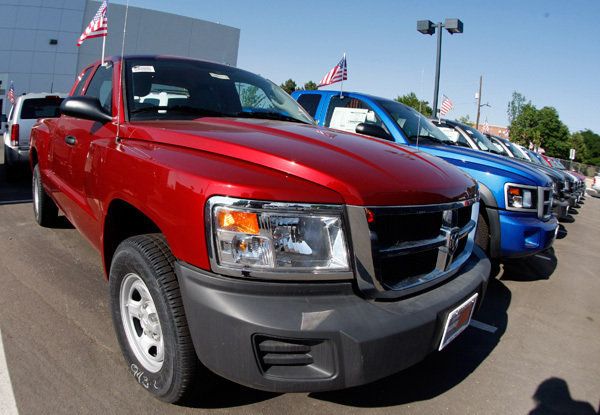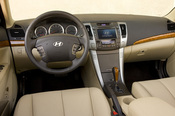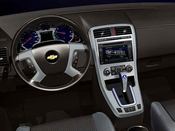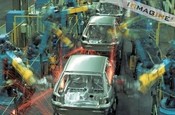
Ever wondered about that dreary film which builds-up inside the windshield of your car or truck? Not outside, which can be taken care of easily enough; inside.
For years I've thought, "Hey, that stuff probably isn't too good for anyone, whatever the heck it is," but unfortunately, I didn't know the half of it.
The Ecology Center, a membership-based, nonprofit environmental organization based in Ann Arbor, MI, says there's more to that fogging than just "new car smell." In fact, their research shows there's a veritable bouillabaisse of toxic fumes released by many of the plastics and other items used in car interiors.
That ugly film? We're breathing it.
(Acura's TSX, below, and RDX both did well on the survey).
This year, Ecology Center's second year of publishing their findings, Acura's RDX and the Smart Fortwo Pure were the Least Toxic Cars, and General Motors was the Most Improved American Manufacturer.
Mitsubishi's Eclipse, the Suzuki Reno and the BMW 128i were the Most Toxic Cars.
The least toxic vehicles in last year's survey were the Chevy Cobalt, Chrysler PT Cruiser, Honda Odyssey and the Volvo V50.
Last year, research found the most toxic vehicles were the Nissan Versa, Chevy Aveo, Scion xB 5-door and the Kia Rio.
Other highly-rated 2008 cars included the Dodge Nitro and BMW M5; among the low-rated vehicles are the Kia Rondo and the Lincoln Navigator.
Highly-rated cars from the limited number of 2009 model year cars available for testing are the Acura TSX and Hyundai's Sonata SEV6. (Hyundai's V6-powered Sonata rated highly; and here's that winning interior).
Several auto manufacturers showed improvement over last year's findings, including General Motors which we mentioned above, Mazda and Nissan.
We all know that modern cars are safer in accidents than ever before, thanks to seat belts and shoulder harnesses, adjustable head rests, much safer seats, safety glass and of course, airbags, seemingly throughout the car. Softer, smarter materials used in dashboards, steering wheels and instrument panels contribute to that safety. But an irony is that cars made before and for a few years after WWII were probably safer, chemically speaking, because fewer plastics and other modern materials were a part of car interiors.
For the testing, over 200 of the most popular 2008- and 2009-model cars and trucks were used. They were all tested for chemicals that off-gas (produce fumes) from parts such as the steering wheel, dashboard, armrests, seats and carpet. These chemicals become part of the air we breathe, says the organization, contributing not only to "new car smell," but they also create a variety of health concerns.
A portable X-Ray device was used to analyze the elemental composition of vehicle components. Other chemicals which were surveyed included antimony (opposite of alimony?), arsenic, chromium, cobalt, copper, mercury, nickel and tin. The substances in this category, says the report, are allergens, carcinogens, or cause other adverse health impacts depending on the concentrations and exposure levels. (GM's Equinox is the company's showcase for their hydrogen fuel cell-powered and zero-emissions EV, its interior pictured here; car-makers must start treating what goes into interiors as seriously as they do what comes out the tailpipe).
Since the average American spends more than 1.5 hours in a car every day, says the report, toxic chemical exposure inside vehicles is a major source of potential indoor air pollution. Southern California residents spend even more time in their cars every day. Children are the most vulnerable because their systems are still developing.
These same chemicals also cause problems in the environment. When vehicles are discarded, the majority of plastic and other non-metallic parts are shredded and put in landfills or burned in incinerators. When discarded in landfills, harmful chemicals contained in vehicle plastics can leach out and contaminate soil and water. When incinerated, toxic chemicals are dispersed throughout the atmosphere.
The group says that the law regulating chemicals in commerce, the Toxic Substance Control Act (TSCA), is 30 years old and needs an overhaul. People are encouraged to contact Senator Barbara Boxer (D-CA), Chair of the Senate Committee on Environment & Public Works, and U.S. Representative John Dingell (D-MI), Chair of the House Committee on Energy and Commerce, and ask for oversight hearings on re-writing TSCA. (Assembly lines are inherently dangerous places, and workers there are constantly in danger of being injured, or worse; car-buyers shouldn't have to take a chance just by sitting in their car or truck. In both cases, it's company executives who make the final decision on where and how their cars are built, and what goes into them).
The Ecology Center is asking for complete health and safety testing on chemicals used in products and industry before they are put on the market, and to promote innovation for safer alternatives.
Find out more, and read and download the complete ratings on car interiors and child car seats at www.ecologycenter.org and www.HealthyCar.org. We're restricted because of space, so today's post focused on only the car ratings; we'll report on the results from their child car seat testing in a future post.
There's another group, which started out as a two-person operation, which for the first time quantified the quality of the cars we buy. That would be Dave Power and his now-deceased wife who, working together at their kitchen table in Detroit, developed the original JD Power surveys which have been so important to the car-makers and car-buyers worldwide.
For the first time ever, those surveys spelled out in black and white the number of problems in specific makes and models, and that became trusted information with which no one could argue. I'm hoping the Ecology Center results have the same effect, and that car-makers use the findings to lower the numbers and amounts of these chemicals in car interiors, so they can take a much-deserved bow when they show improvement.
Would like to see your comments on the topic ... Is it something you've wondered about? Or are you like me, who had my suspicions, but are glad these chemicals and the health problems they can cause are finally being quantified and made public? What else needs to happen to improve car interiors?